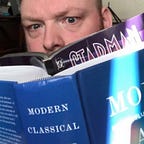Testing symmetry and space-time with atomic clocks
Physicists have once again tested and confirmed the predictions made by Einstein’s theory of special relativity — devised over 100 years ago.
The first principle of Einstein’s Special Theory of Relativity is the hypothesis that the speed of light has the same value for all observers no matter what speed they are moving at. One-hundred years after its inception, following a multitude of experimental tests, it sometimes escapes us just how counter-intuitive this idea actually is.
It may, however, be possible that — according to theoretical models of quantum gravitation — this uniformity of space-time does not apply to all particles. Physicists from the Physikalisch-Technische Bundesanstalt (PTB) and the University of Delaware have now tested this hypothesis with a first long-term comparison of two optical ytterbium clocks — which trap a thousand ytterbium atoms in grids made of laser beams — at the Physikalisch-Technische Bundesanstalt (PTB).
With these clocks — possessing a potential error that amounts to only one second in ten billion years — it should be possible to measure even extremely small deviations of the movement of the electrons in ytterbium. The researchers in question did not detect any change when the…
